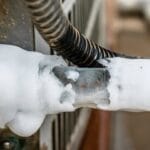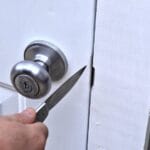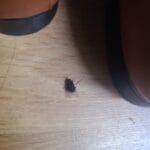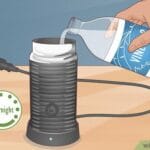Kenmore washers are popular for their reliability. Yet, they can face problems.
Is your Kenmore washer acting up? Don’t worry, many common issues have simple fixes. In this post, we’ll guide you through troubleshooting steps to get your washer running smoothly again. Whether it’s not spinning, draining, or filling with water, understanding the problem is the first step to resolving it.
We’ll cover typical symptoms and their solutions. By the end, you’ll feel more confident about tackling washer issues yourself. Let’s dive in and ensure your laundry days are stress-free.
Washer Not Starting
Is your Kenmore washer refusing to start? This can be frustrating. But don’t worry. Here are some steps to help you troubleshoot and solve the problem.
Power Supply Check
First, ensure your washer is receiving power. Here are some steps:
- Check if the power cord is plugged in.
- Inspect the outlet by plugging in another device.
- Look at the circuit breaker. Ensure it hasn’t tripped.
Sometimes, a simple reset can help. Unplug the washer for a few minutes. Then plug it back in. See if it starts.
Door Lock Problems
A common issue is the door lock. The washer won’t start if the door isn’t closed properly. Follow these steps:
- Check if the door is fully closed.
- Examine the door latch for any damage.
- Make sure there is no debris in the latch area.
If you see any damage, you may need to replace the door lock. It’s a simple fix. But it can make a big difference.
| Issue | Possible Solution |
|---|---|
| Power Supply | Ensure the washer is plugged in and check the circuit breaker. |
| Door Lock | Ensure the door is closed and the latch is not damaged. |
Water Not Filling
Experiencing water not filling in your Kenmore washer can be frustrating. This issue can stem from various causes. Let’s explore some common problems and their solutions to help you get your washer back in working order.
Water Supply Issues
First, check the water supply. Ensure both hot and cold water faucets are turned on. Verify that hoses are not kinked or damaged. A simple inspection can reveal blockages or leaks. If you find any, replace the hoses immediately.
Inlet Valve Problems
The inlet valve controls the water flow into your washer. It can become clogged with debris. To check, unplug the washer and turn off the water supply. Locate the inlet valve at the back of the washer. Remove the hoses and inspect the screens inside the valve. Clean any debris you find.
If the valve appears damaged or not functioning, it may need replacement. Use a multimeter to test the valve for continuity. A faulty valve will show no reading. Replace the valve if necessary.
Washer Not Draining
Having a Kenmore washer that does not drain can be frustrating. Several issues might cause your washer to stop draining. This section will help you troubleshoot the most common problems. By following these steps, you can identify and possibly fix the issue. Let’s explore the common reasons your washer may not be draining.
Clogged Drain Hose
A clogged drain hose is a common reason for a Kenmore washer not draining. Over time, debris and lint can build up inside the hose. This can block the water flow. To check the drain hose, follow these steps:
- Unplug your washer.
- Locate the drain hose at the back of the washer.
- Disconnect the hose from the washer and the drain pipe.
- Inspect the hose for any blockages.
- Use a flexible brush or a long wire to remove any debris.
- Reconnect the hose and test the washer.
Ensure the hose is properly connected and not kinked. A kinked hose can also prevent proper drainage.
Pump Malfunctions
The drain pump is crucial for draining water from your washer. If the pump is faulty, your washer may not drain properly. Here’s how to troubleshoot the pump:
- Unplug the washer and remove the front panel.
- Locate the drain pump near the bottom of the washer.
- Check for any visible obstructions in the pump.
- Use a multimeter to test the pump’s electrical continuity.
- If the pump has no continuity, it may need to be replaced.
Inspect the pump for any damage or wear. If it is damaged, replacing the pump is necessary for the washer to drain properly.
By following these steps, you can identify the root cause of your Kenmore washer not draining. Whether it’s a clogged drain hose or a malfunctioning pump, addressing these issues will help you get your washer back in working order.
Excessive Vibrations
Excessive vibrations in your Kenmore washer can be alarming. They can also cause damage to the machine or your floor. Understanding the reasons behind these vibrations can help you fix the problem. Let’s explore two common issues: leveling the washer and checking for overloading.
Leveling The Washer
A washer that isn’t level can shake and vibrate excessively. To check this:
- Use a carpenter’s level to check the machine’s position.
- Place the level on top of the washer. Ensure it is even.
- If the washer is not level, adjust the legs. Most washers have adjustable feet.
- Turn the feet clockwise or counterclockwise to raise or lower them.
- Check the level again after adjusting. Repeat as needed until the washer is level.
Checking For Overloading
Overloading the washer is another common cause of excessive vibrations. To avoid this:
- Do not fill the washer drum more than three-quarters full.
- Wash bulky items separately. Items like blankets and comforters can unbalance the washer.
- Spread clothes evenly around the drum. This ensures even distribution.
- If the washer vibrates, try redistributing the load.
- Consider washing large loads in smaller batches.
These simple checks can help reduce or eliminate vibrations in your Kenmore washer. Keeping the washer level and not overloading it can ensure smoother operation and longer life.
Washer Leaking Water
Dealing with a Kenmore washer leaking water can be frustrating. It can lead to water damage and increased utility bills. In this section, we’ll explore common causes and solutions for this issue. Focus on inspecting hoses and addressing door seal issues.
Inspecting Hoses
The first step is to check the hoses connected to your washer. A loose or damaged hose can cause leaks.
- Ensure all hoses are securely tightened. A loose hose can lead to leaks.
- Inspect the hoses for cracks or wear. Replace damaged hoses immediately.
- Check the washer hose connections. Both the hot and cold water lines should be tight.
Consider using stainless steel hoses for durability. They are less likely to leak.
Door Seal Issues
The door seal is another common source of leaks. If the seal is damaged, water can escape during the wash cycle.
- Open the washer door and inspect the seal. Look for tears or signs of wear.
- Clean the seal with a mild detergent and a soft cloth. Dirt can prevent a proper seal.
- Replace the door seal if it is damaged. A worn seal cannot be fixed and must be replaced.
Regular maintenance of the door seal can prevent future leaks. Check and clean it monthly.
Credit: wordpress.jcu.edu
Unusual Noises
Hearing unusual noises from your Kenmore washer? Don’t panic.
These sounds can be alarming, but they often have simple fixes.
Identifying the source of the noise is the first step in resolving the issue.
Identifying Source
Start by listening carefully. Different noises indicate different problems.
A banging sound could mean an unbalanced load.
A grinding noise might suggest a problem with the motor or drum.
Run the washer without any clothes. This helps isolate the noise.
Take note of the timing. Does it happen during the spin cycle or the wash cycle?
This information is crucial for pinpointing the issue.
| Noise | Possible Cause |
|---|---|
| Banging | Unbalanced load |
| Grinding | Motor or drum issue |
| Clicking | Loose parts |
Fixing Loose Parts
Loose parts can cause clicking or rattling sounds.
Check the drum for any foreign objects.
Coins or small items can get stuck and make noise.
Inspect the screws and bolts.
Tighten any loose ones using a screwdriver.
Focus on the drum and motor areas.
These parts tend to loosen over time due to vibration.
- Unplug the washer.
- Remove the back panel.
- Inspect all visible screws and bolts.
- Tighten any that are loose.
- Reassemble the washer.
After tightening, run a test cycle.
If the noise persists, there may be a deeper issue.
Consult a professional for further assistance.
Clothes Not Cleaning Well
Experiencing clothes that aren’t coming out clean from your Kenmore washer can be frustrating. This issue can often be traced back to a few common factors. By addressing these factors, you can ensure your clothes come out fresh and clean every time.
Detergent Usage
Using the right amount of detergent is crucial. Too much detergent can leave residue on clothes. Too little, and they won’t get clean. Check your detergent’s instructions for the recommended amount. Consider using high-efficiency detergent if you have a high-efficiency washer. This type of detergent produces fewer suds, which is better for cleaning.
Load Size Optimization
Proper load size plays a key role in how well your clothes get cleaned. Overloading your washer can prevent clothes from moving freely. This restriction can result in poor cleaning. On the other hand, washing too few items can be inefficient. Aim for a balanced load where clothes have enough space to move around. This way, water and detergent can circulate properly.

Credit: www.youtube.com

Credit: www.ifixit.com
Frequently Asked Questions
Why Is My Kenmore Washer Not Draining?
A clogged drain hose or filter may be the issue. Check and clean them.
How Do I Reset My Kenmore Washer?
Unplug the washer for 1 minute. Plug it back in to reset.
What Causes A Kenmore Washer To Shake?
An unbalanced load or uneven floor can cause shaking. Rebalance the load or adjust the feet.
Why Does My Kenmore Washer Make Noise?
Noises could be from loose objects in the drum or worn-out parts. Inspect and remove any items.
How Do I Fix My Kenmore Washer Not Spinning?
Check the lid switch and motor coupler. Replace if they are faulty.
Conclusion
Fixing your Kenmore washer can be simple. Follow the steps in this guide. Regular maintenance helps avoid problems. Don’t ignore small issues. They can become big troubles. Keep your washer clean and check for leaks. Listen for strange noises. These tips can save you time and money.
Always consult your manual for specific advice. Happy washing!





